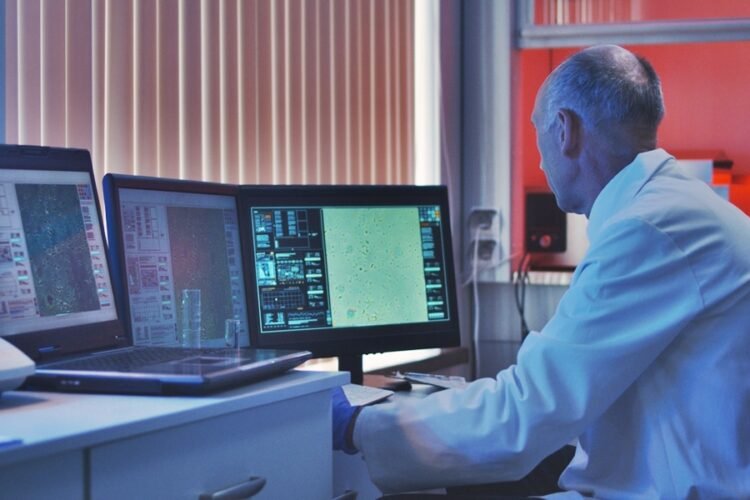
What is Bioinformatics?
Bioinformatics is a field that applies computational techniques to analyze and interpret biological data, such as DNA sequences, protein structures, and gene expressions, to understand biological processes and solve biological problems.
In the last few decades, the convergence of biology and information technology has given rise to this burgeoning field we now call bioinformatics. This interdisciplinary domain encompasses the application of computational methods, algorithms, and data analysis techniques to biological data, particularly in genomics, proteomics, and other omics disciplines. Bioinformatics has emerged as a cornerstone in modern healthcare and genomics research, revolutionizing the way we understand, diagnose, and treat diseases.
The Marriage of Biology and Information Technology
Bioinformatics owes its existence to the exponential growth of biological data resulting from advances in high-throughput technologies such as DNA sequencing, mass spectrometry, and microarray analysis. These technologies generate vast amounts of raw data, which without computational tools, would be virtually impossible to interpret and derive meaningful insights from.
The essence of bioinformatics lies in its ability to leverage computational algorithms and statistical models to analyze biological data efficiently. From DNA sequences to protein structures, bioinformatics techniques facilitate the exploration of complex biological systems and the extraction of valuable information hidden within the data.
Unraveling the Genome: Sequencing and Annotation
Central to the field of bioinformatics is genome sequencing—the process of determining the complete DNA sequence of an organism’s genome. Since the completion of the Human Genome Project in 2003, DNA sequencing technologies have advanced rapidly, becoming faster, more accurate, and increasingly cost-effective.
Bioinformatics plays a pivotal role in genome sequencing by providing algorithms and software tools for assembling short DNA sequences into complete genomes, identifying genes, annotating genetic variations, and predicting protein structures and functions. These capabilities have fueled groundbreaking discoveries in genomics and paved the way for personalized medicine—a paradigm shift in healthcare that tailors medical treatments to individuals based on their genetic makeup.
From Data to Diagnosis: Clinical Applications of Bioinformatics
In the realm of healthcare, bioinformatics is transforming the landscape of disease diagnosis, prognosis, and treatment. By analyzing genomic data obtained from patients, clinicians can identify genetic mutations associated with hereditary diseases, predict individual susceptibility to certain conditions, and tailor treatment plans to optimize therapeutic outcomes.
One notable application of bioinformatics in clinical practice is pharmacogenomics—the study of how an individual’s genetic makeup influences their response to drugs. By analyzing genetic variations, clinicians can predict drug efficacy, anticipate adverse drug reactions, and prescribe medications tailored to a patient’s unique genetic profile, thereby improving drug safety and efficacy.
Bioinformatics also plays a crucial role in cancer research and precision oncology—the use of genomic information to guide cancer diagnosis and treatment. By analyzing tumor genomes, researchers can identify driver mutations driving cancer progression, characterize tumor heterogeneity, and develop targeted therapies tailored to specific molecular alterations in individual patients.
Challenges and Future Directions
Despite its immense potential, bioinformatics faces several challenges that must be addressed to realize its full impact on healthcare and genomics research. Chief among these challenges are the integration of diverse data types, ensuring data privacy and security, developing robust computational algorithms, and enhancing data interpretation and visualization tools.
Furthermore, the rapid evolution of sequencing technologies and the exponential growth of biological data pose scalability and computational challenges that require innovative solutions and infrastructural support.
Looking ahead, the future of bioinformatics holds great promise. Advances in artificial intelligence, machine learning, and cloud computing are poised to revolutionize the field, enabling researchers to extract deeper insights from biological data, accelerate drug discovery, and unlock the mysteries of the human genome.
Conclusion
Bioinformatics represents a convergence of biology, computer science, and information technology that is reshaping our understanding of healthcare and genomics. By harnessing the power of computational methods and data analysis techniques, bioinformatics is driving innovation in personalized medicine, disease diagnosis, and drug discovery, ultimately improving patient outcomes and advancing our quest for a healthier future. As technology continues to evolve, the role of bioinformatics in healthcare and genomics will only become more prominent, ushering in a new era of precision medicine and scientific discovery.
